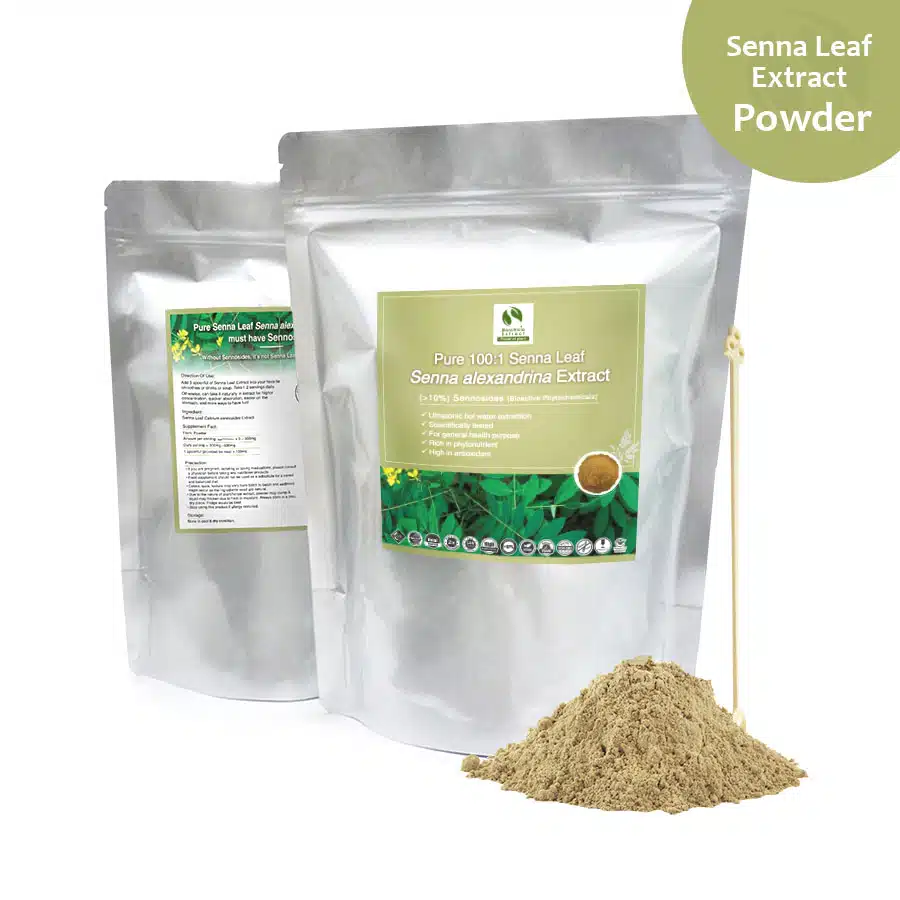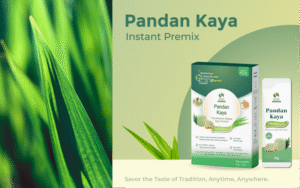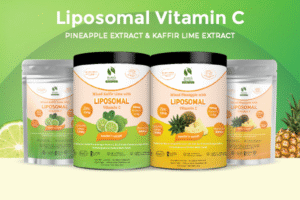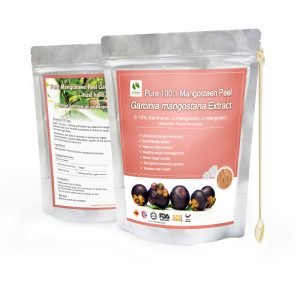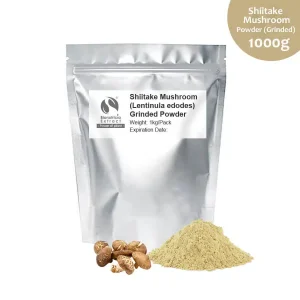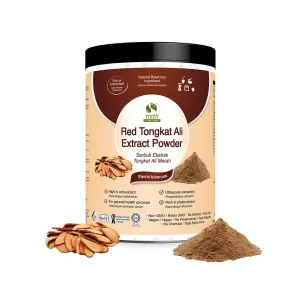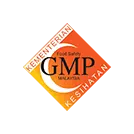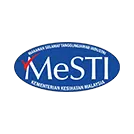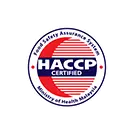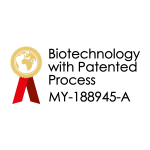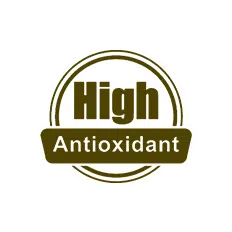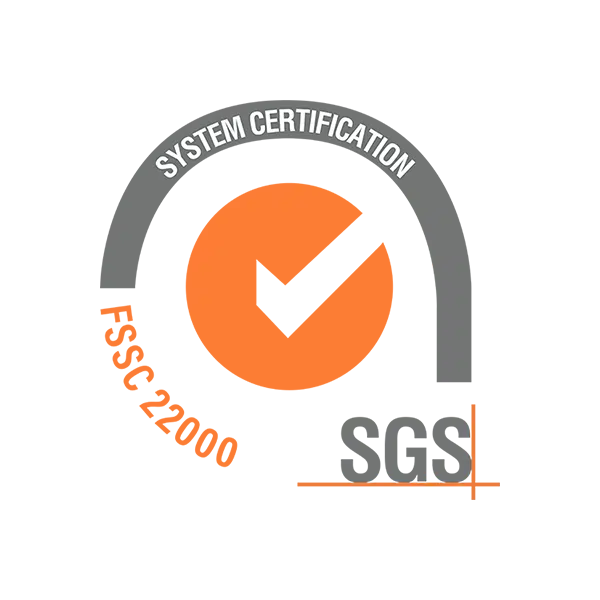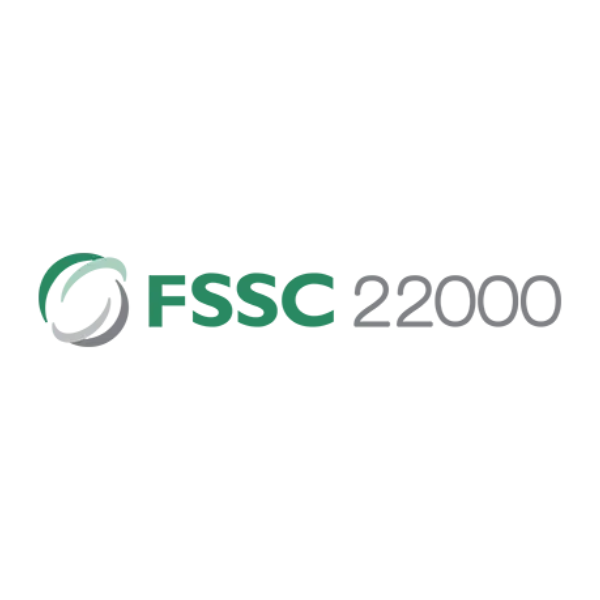Senna leaf
Senna alexandrina
Sennae folium
Alexandrian senna, Khartoum senna, Tinnevelly senna
Sennas areherbaceous subshrubs and both varieties used, Alexandrian and Tinnevelly, have desert origins (Bruneton, 1995). Alexandrian senna is native to northern and northeastern Africa, growing wild in semidesert and sudanosahelian zones of Africa, including Egypt, Morocco, Mauritania, Mali, and Sudan. It is cultivated in the valley of the Nile in Sudan, southern China, and India. Tinnevelly senna is native to southern India and northeastern Africa, grows wild in southern Arabia, on the coast of East Africa from Mozambique to Somaliland, and Asia. It is now cultivated on a large scale in southern and northwestern India and in Pakistan (Bruneton, 1995; Iwu, 1990; Leung and Foster, 1996; Remington et al., 1918; Wichtl and Bisset, 1994). The Tinnevelly senna of commerce is obtained mainly fromIndia, and Alexandrian is obtained mainly from Egypt and Sudan (BHP, 1996; Wichtl and Bisset, 1994).
Senna is the most widely used anthranoid drug today and has been used for centuries in Western and Eastern systems of medicine as a laxative, usually taken as a tea or swallowed in powdered form (Bradley, 1992; Leung and Foster, 1996; Der Marderosian, 1999). Besides its wide use in conventional Western medicine, senna leaf remains an important drug used in traditional Chinese medicine and traditional Indian Ayurvedic and Unani medicine (IP, 1996; Kapoor, 1990; Karnick, 1994; Tu, 1992). Its name is derived from the Arabic sena. Its medical use was first described in the writings of Arabian physicians Serapion and Mesue in the ninth century C.E. (Chevallier, 1996; Grieve, 1979; Der Marderosian, 1999; Remington et al., 1918). Today, senna leaf and fruit are official in national pharmacopeias worldwide, including those ofAustria,China, France, Germany, Great Britain, Hungary, India, Japan, Russia, Switzerland, the United States, the European Pharmacopoeia, and many others (BP, 1988;Bradley, 1992; DAB 10, 1991; IP, 1996; JP XII, 1993; AB, 1981; Ph.Eur.3, 1998; Ph.Fr.X, 1994; Ph.Helv.VII, 1987; Ph.Hg.VII, 1986; Tu, 1992; USP XXII, 1990; USSR X, 1973; Wichtl and Bisset, 1994).
In Germany, senna leaf, Alexandrian senna pod, and Tinnevelly senna pod are licensed as Standard Medicinal Teas available only in the pharmacy, official in the German Pharmacopoeia, and approved in the Commission E monographs.They are used alone and in more than 110 prepared drugs, mostly laxatives and biliary remedies (BAnz, 1998; Bradley, 1992; Braun et al., 1997; DAB 10, 1991;Meyer-Buchtela, 1999; Wichtl and Bisset, 1994).In the United States, senna leaf, fruit, and extract are used in OTC laxatives (e.g., Correctol®, ExLax®, Senokot®, Smooth Move®).
Modern human studies have investigated the use of senna for severe constipation (Pers and Pers, 1983), for chronic constipation in long-stay elderly patients (Kinnunen et al., 1993; MacLennan and Pooler, 1974; Passmore et al., 1993), for constipation in childhood (Perkin, 1977; Sondheimer and Gervaise, 1982), for managing morphine-induced constipation (Ramesh et al., 1998), for bowel preparation prior to intravenous urography (Bailey et al., 1991), to improve colonoscopy preparation with lavage (Ziegenhagen et al., 1991; Ziegenhagen et al., 1992), for preparation prior to radiographic examination of the colon (Brouwers et al., 1980; Slanger, 1979), in management of constipation in the immediate postpartum period (Shelton, 1980), in management of postoperative constipation in anorectal surgery (Corman, 1979), to improve the visibility of abdominal organs in ultrasound examination (Heldwein et al., 1987), for disorders characterized by slow intestinal transit time or constipation (Bossi et al., 1986), and as a laxative for terminal cancer patients treated with opiates (Agra et al., 1998).
The approved modern therapeutic applications for senna are supportable based on its history of use in well establishedsystemsof traditional and conventional medicine, extensive phytochemical investigations, in vitro and in vivo pharmacological studies in animals, and human clinical studies.
Pharmacopeial grade senna leaf must consist of the dried leaflets of Alexandrian or Tinnevelly senna, or a mixture of both species.It must contain not less than 2.5% of hydroxyanthracene glycosides, calculated as sennoside B. Botanical identification must be confirmed by thin-layer chromatography (TLC), macroscopic and microscopic examinations, and organoleptic evaluation. The stomatal index (a calculation of the percentage of stomataholes in the leaf’s skin through which the plant breathescomprising the number of epidermal cells, including the stomata, each stoma being counted as one cell) for Alexandrian senna is 1015, usually 12.5 and for Tinnevelly senna it is 1420, usually 17.5 (BP, 1988; IP, 1996; Ph.Eur.3, 1998; Tu, 1992). The Japanese Pharmacopoeia additionally requires a purity standard of not more than 5.0% rachis (the main axis of the compound leaf) and fruits contained in the senna leaf (JP XII, 1993). The French Pharmacopoeia additionally requires a test for absence of known adulterants, namely Cassia auriculata (Bruneton, 1995; Ph.Fr.X, 1994). The ESCOP monograph requires the material to comply with the European Pharmacopoeia (ESCOP, 1997).
Pharmacopeial grade senna leaf standardized dry extract (Sennae folii extractum siccum normatum) must be manufactured from European Pharmacopoeia (Ph.Eur.) grade Sennae folium in accordance with the Ph.Eur. Extracta monograph. It must contain minimum 5.5% and maximum 8.0% hydroxyanthracene glycosides calculated as sennoside B with reference to the dry extract, with an allowed deviation of 10% (Ph.Eur.3, 1998).
Pharmacopeial grade senna pod must consist of the dried fruit of Alexandrian or Tinnevelly senna, or both.It must contain not less than 3.4% (Alexandrian senna pod) and not less than 2.2% (Tinnevelly senna pod) hydroxyanthracene glycosides, calculated as sennoside B. Botanical identification must be confirmed by TLC, macroscopic and microscopic examinations, and organoleptic evaluation (BP, 1988; IP, 1996; Ph.Eur.3, 1998). The Japanese Herbal Medicines Codex, however, requires not less than 2.2% of total anthraquinone glycosides calculated as sennoside A (JHMC, 1993). The ESCOP monographs require the material to comply with the European Pharmacopoeia (ESCOP, 1997).
Senna leaf consists of the dried leaflets (pinnulae) of Cassia senna L. (C. acutifolia Del.) [Fam. Fabaceae], known as Alexandrian or Khartoum senna, or of C. angustifolia Vahl, known as Tinnevelly senna, and their preparations in effective dosage. [Currently accepted nomenclature for all three cultivars is Senna alexandrina Miller.] The leaves contain anthranoids, mainly of the bi-anthrone type. The content of anthranoids of the emodin and aloe-emodin type is usually higher in senna pod. The preparation must conform to the currently valid pharmacopeia.
Senna leaf contains 1.53% hydroxyanthracene glycosides, mainly sennosides A and B, which are rhein-dianthrones, and smaller amounts of sennosides C and D, which are rhein-aloe-emodin-heterodianthrones; naphthalene glycosides; flavonoids (derivatives of kaempferol and isorhamnetin); 1012% mineral matter; 710% mucilage (galactose, arabinose, rhamnose, and galacturonic acid); about 8% polyol (pinitol); sugars (glucose, fructose, and sucrose); and resins (Bradley, 1992; Bruneton, 1995; ESCOP, 1997; Leung and Foster, 1996; Newall et al., 1996; Wichtl and Bisset, 1994).
The Commission E reported 1,8-dihydroxy-anthracene derivatives have a laxative effect. This effect is due to the sennosides, specifically their active metabolite in the colon, rheinanthrone. The effect is caused by inhibiting stationary and stimulating propulsive contractions in the colon. This results in an accelerated intestinal passage and, because of the shortened contact time, a reduction in liquid absorbed through the lumen. In addition, stimulation of active chloride secretion increases water and electrolyte content of the contents of the intestine.
Systematic studies pertaining to the kinetics of senna leaf preparations are not available. However, it must be supposed that the aglycones contained in the drug are absorbed in the upper small intestine. The b-glycosides are prodrugs that are neither absorbed nor cleaved in the upper gastrointestinal tract. They are degraded in the colon by bacterial enzymes to rheinanthrone, the laxative metabolite. The systemic availability of rheinanthrone is very low. Animal experiments reveal that less than 5% is passed in the urine in oxidized form or in conjugated form as rhein and sennodine. The major amount of rheinanthrone (more than 90%) is bound to the feces in the colon and excreted as a polymer.
Active metabolites, such as rhein, infiltrate in small amounts into the milk ducts. A laxative effect on nursing infants has not been observed. The placental permeability for rhein is very small, as was observed in animal experiments.
Drug preparations (i.e., preparations from whole senna leaf) have a higher general toxicity than the pure glycosides, presumably due to the content of aglycones. Experiments with senna leaf preparations are not available. A senna extract showed mutagenic toxicity in vitro. The pure substance, sennoside A, B, showed no mutagenic toxicity in vitro. An in vivo study with a defined extract of senna pod revealed no mutagenicity. Preparations with an anthranoid content of 1.43.5% (calculated as the sum of specific individual compounds) were used. These were potentially equivalent to 0.92.9% rhein, 0.050.15% aloe-emodin, and 0.0010.006% emodin. The results appear to be also applicable for specific senna leaf preparations. Some positive results have been observed for aloe-emodin, and emodin. A study for carcinogenicity was performed with an enriched sennoside fraction containing about 40.8% anthranoids, of which 35% were sennosides (calculated as the sum of the individually determined compounds), equivalent to about 25.2% of the calculated potential rhein, 2.3% potential aloe-emodin, and 0.007% potential emodin. The tested substance contained 142 ppm free aloe-emodin and 9 ppm free emodin. The study was conducted over 104 weeks. Rats received up to 25 mg/kg body weight and showed no substance-dependent increase of tumors.
The Commission E approved the internal use of senna leaf for constipation.
The World Health Organization (WHO) approves senna leaf for short-term use in occasional constipation (WHO, 1999).
The British Herbal Compendium indicates its use for constipation and conditions in which easy defecation with soft stools is desirable, such as anal fissure or hemorrhoids (Bradley, 1992). ESCOP indicates it for short-term use in cases of occasional constipation (ESCOP, 1997); the German Standard License for senna leaf tea indicates its use for constipation; conditions in which easy bowel evacuation with soft stools is desirable, for example in cases of anal fissures, hemorrhoids, and after recto-anal operations; for bowel clearance before X-ray examinations; and before and after abdominal surgery (Bradley, 1992; Wichtl and Bisset, 1994).
Intestinal obstruction, acute intestinal inflammation, e.g., Crohn’s disease, colitis ulcerosa, appendicitis, abdominal pain of unknown origin. Children under 12 years of age.
In cases of chronic use or abuse, loss of potassium may potentiate cardiac glycosides and have an effect on anti-arrhythmic medications.
Potassium deficiency may be exacerbated by simultaneous administration of thiazide diuretics, corticoadrenal steroids, or licorice root.
In single incidents, cramp-like discomforts of the gastrointestinal tract. These cases require a dosage reduction.
With chronic use or abuse: Disturbance of electrolyte balance, especially potassium deficiency, albuminuria and hematuria. Pigment implantation into the intestinal mucosa (pseudomelanosis coli) is harmless and usually reverses on discontinuation of the drug. Potassium deficiency can lead to disorders of heart function and muscular weakness, especially with concurrent use of cardiac glycosides, diuretics, or corticosteroids.
Due to insufficient toxicological investigation, this herb should not be used during pregnancy or lactation.
Unless otherwise prescribed: 0.62.0 g (corresponding to 2030 mg hydroxyanthracene derivatives calculated as sennoside B) per day of cut or powdered herb or dried extracts for teas, decoctions, cold macerates, or elixirs. Liquid or solid forms of medication exclusively for oral use.
The correct dosage is the smallest dose necessary to maintain a soft stool.
Note:The form of administration should be smaller than the daily dose.
Dried leaf: 0.62.0 g.
Infusion or decoction: 0.62.0 g in 150 ml hot water for 10 to 30 minutes.
Cold macerate: 0.62.0 g in 150 ml cold water for 10 to 12 hours, strain, then heat before drinking.
Fluidextract 1:1 (g/ml): 0.62.0 ml.
Elixir: 0.62.0 ml sweetened fluidextract.
Dry hydroalcoholic extract (5.58.0% hydroxyanthracene glycosides): 0.250.55 g.
Special caution for use: Stimulating laxatives must not be used for more than one to two weeks without medical advice.
Overdosage: Electrolyte and fluid imbalance.
Special warnings: Use of a stimulating laxative for longer than the recommended period can cause intestinal sluggishness.
This preparation should be used only if no effects can be obtained through changes in diet or the use of bulk-forming products.
- Agra, Y. et al. 1998. Efficacy of senna versus lactulose in terminal cancer patients treated with opioids. J Pain Symptom Manage 15(1):17.
- Bailey, S.R., P.N. Tyrrell, M. Hale. 1991. A trial to assess the effectiveness of bowel preparation prior to intravenous urography. Clin Radiol 44(5):335337.
- BAnz. See Bundesanzeiger.
- Bossi, S. et al. 1986. [Clinical study of a new preparation from plantago seeds and senna pods] [In Italian]. Acta Biomed Ateneo Parmense 57(56):179186.
- Bradley, P.R. (ed.). 1992. British Herbal Compendium, Vol. 1. Bournemouth: British Herbal Medicine Association.
- Braun, R. et al. 1997. Standardzulassungen f r FertigarzneimittelText and Kommentar. Stuttgart: Deutscher Apotheker Verlag.
- British Herbal Pharmacopoeia (BHP). 1996. Exeter, U.K.: British Herbal Medicine Association. 168.
- British Pharmacopoeia (BP). 1988. (With subsequent Addenda up to 1992.) London: Her Majesty’s Stationery Office.
- Brouwers, J.R., W.P. van Ouwerkerk, S.M. de Boer, L. Thoman. 1980. A controlled trial of senna preparations and other laxatives used for bowel cleansing prior to radiological examination. Pharmacology 20(suppl 1):5864.
- Bruneton, J. 1995. Pharmacognosy, Phytochemistry, Medicinal Plants. Paris: Lavoisier Publishing.
- Bundesanzeiger (BAnz). 1998. Monographien der Kommission E (Zulassungs- und Aufbereitungskommission am BGA f r den humanmed. Bereich, phytotherapeutische Therapierichtung und Stoffgruppe). Kln: Bundesgesundheitsamt (BGA).
- Chevallier, A. 1996. Encyclopedia of Medicinal Plants. New York: DK Publishing. 72.
- Corman, M.L. 1979. Management of postoperative constipation in anorectal surgery. Dis Colon Rectum 22(3):149151.
- Der Marderosian, A. (ed.). 1999. The Review of Natural Products. St. Louis: Facts and Comparisons.
- Deutsches Arzneibuch, 10th ed. (DAB 10). 1991. (With subsequent supplements through 1996.) Stuttgart: Deutscher Apotheker Verlag.
- ESCOP. 1997. ‘Sennae folium,’ ‘Sennae fructus acutifoliae,’ and ‘Sennae fructus angustifoliae.’ Monographs on the Medicinal Uses of Plant Drugs. Exeter, U.K.: European Scientific Cooperative on Phytotherapy.
- Europäisches Arzneibuch, 3rd ed., 1st suppl. (Ph.Eur.3). 1998. Stuttgart: Deutscher Apotheker Verlag. 612617.
- Grieve, M. 1979. A Modern Herbal. New York: Dover Publications, Inc.
- Heldwein, W. et al. 1987. Evaluation of the usefulness of dimethicone and/or senna extract in improving the visualization of abdominal organs. JCU J Clin Ultrasound 15(7):455458.
- Indian Pharmacopoeia, Vol. 1. (IP 1996). 1996. Delhi: Government of India Ministry of Health and Family WelfareController of Publications. 675678.
- Iwu, M.M. 1990. Handbook of African Medicinal Plants. Boca Raton: CRC Press. 143144.
- Japanese Herbal Medicines Codex (JHMC). 1993. Tokyo: Government of Japan Ministry of Health and WelfareYakuji Nippo, Ltd. 252254.
- Japanese Pharmacopoeia, 12th ed. (JP XII). 1993. Tokyo: Government of Japan Ministry of Health and WelfareYakuji Nippo, Ltd. 255257.
- Kapoor, L.D. 1990. Handbook of Ayurvedic Medicinal Plants. Boca Raton: CRC Press. 104.
- Karnick, C.R. 1994. Pharmacopoeial Standards of Herbal Plants. Delhi: Sri Satguru Publications.
- Kinnunen, O., I. Winblad, P. Koistinen, J. Salokannel. 1993. Safety and efficacy of a bulk laxative containing senna versus lactulose in the treatment of chronic constipation in geriatric patients. Pharmacology 47(suppl 1):253255.
- Leung, A.Y. and S. Foster. 1996. Encyclopedia of Common Natural Ingredients Used in Food, Drugs, and Cosmetics, 2nd ed. New York: John Wiley & Sons, Inc.
- MacLennan, W.J. and A.F. Pooler. 19741975. A comparison of sodium picosulphate (‘Laxoberal’) with standardized senna (‘Senokot’) in geriatric patients. Curr Med Res Opin 2(10):641647.
- Meyer-Buchtela, E. 1999. Tee-RezepturenEin Handbuch f r Apotheker und rzte. Stuttgart: Deutscher Apotheker Verlag.
- Newall, C.A., L.A. Anderson, J.D. Phillipson. 1996. Herbal Medicines: A Guide for Health-Care Professionals. London: The Pharmaceutical Press.
- sterreichisches Arzneibuch, Vols. 12. ( AB). 1981. Wien: Verlag der sterreichischen Staatsdruckerei.
- Passmore, A.P., K.W. Davies, C. Stoker, M.E. Scott. 1993. Chronic constipation in long stay elderly patients: a comparison of lactulose and a senna-fibre combination. BMJ 307(6907):769771.
- Passmore, A.P., K.W. Davies, P.G. Flanagan, C. Stoker, M.G. Scott. 1993. A comparison of Agiolax and lactulose in elderly patients with chronic constipation. Pharmacology 47(suppl 1):249252.
- Perkin, J.M. 1977. Constipation in childhood: a controlled comparison between lactulose and standardized senna. Curr Med Res Opin 4(8):540543.
- Pers, M. and B. Pers. 1983. A crossover comparative study with two bulk laxatives. J Int Med Res 11(1):5153.
- Pharmacope Franaise Xe dition (Ph.Fr.X). 1994. Moulins-les-Metz: Maisonneuve S.A.
- Pharmacopoeia Helvetica, 7th ed. Vol. 14.(Ph.Helv.VII). 1987. Bern: Office Central Fdral des Imprims et du Matriel.
- Pharmacopoea Hungaric, 7th ed. (Ph.Hg.VII). 1986. Budapest: Medicina Knyvkiad.
- Ph.Eur.3. See Europäisches Arzneibuch.
- Ramesh, P.R., K.S. Kumar, M.R. Rajagopal, P. Balachandran, P.K. Warrier. 1998. Managing morphine-induced constipation: a controlled comparison of an Ayurvedic formulation and senna. J Pain Symptom Manage 16(4):240244.
- Remington, J.P. et al. 1918. The Dispensatory of the United States of America, 20th ed. Philadelphia; London: J.B. Lippincott Co. 990996.
- Shelton, M.G. 1980. Standardized senna in the management of constipation in the puerperium: a clinical trial. S Afr Med J 57(3):7880.
- Slanger, A. 1979. Comparative study of a standardized senna liquid and castor oil in preparing patients for radiographic examination of the colon. Dis Colon Rectum 22(5):356359.
- Sondheimer, J.M. and E.P. Gervaise. 1982. Lubricant versus laxative in the treatment of chronic functional constipation of children: a comparative study. J Pediatr Gastroenterol Nutr 1(2):223226.
- State Pharmacopoeia of the Union of Soviet Socialist Republics, 10th ed. (USSR X). 1973. Moscow: Ministry of Health of the U.S.S.R.
- Tu, G. (ed.). 1992. Pharmacopoeia of the People’s Republic of China (English Edition 1992). Beijing: Guangdong Science and Technology Press. 5758.
- The United States Pharmacopeia, 22nd rev.(USP XXII). 1990. Rockville, MD: U.S. Pharmacopoeial Convention.
- USSR X.See State Pharmacopoeia of the Union of Soviet Socialist Republics.
- WHO. See World Health Organization.
- Wichtl, M. and N.G. Bisset (eds.). 1994. Herbal Drugs and Phytopharmaceuticals. Stuttgart: Medpharm Scientific Publishers.
- World Health Organization (WHO). 1999. ‘Sennae folium’ and ‘Sennae fructus.’ WHO Monographs on Selected Medicinal Plants, Vol. 1. Geneva: World Health Organization.
- Ziegenhagen, D.J., E. Zehnter, W. Tacke, T. Gheorghiu, W. Kruis. 1992. Senna vs. bisacodyl in addition to Golytely lavage for colonoscopy preparationa prospective randomized trial. Z Gastroenterol 30(1):1719.
- Ziegenhagen, D.J., E. Zehnter, W. Tacke, W. Kruis. 1991. Addition of senna improves colonoscopy preparation with lavage: a prospective randomized trial. Gastrointest Endosc 37(5):547549.
- British Pharmaceutical Codex (BPC). 1973. London: The Pharmaceutical Press.
- Deutsches Arzneibuch, 9th ed. Vol. 3. (DAB 9). 1988. Kommentar. Stuttgart: Wissenschaftliche Verlagsgesellschaft. 31103114.
- Deutsches Arzneibuch, 10th ed. Vol. 16. (DAB 10). 1991. Kommentar. Stuttgart: Wissenschaftliche Verlagsgesellschaft.
- Hnsel, R., K. Keller, H. Rimpler, G. Schneider (eds.). 1992. Hagers Handbuch der Pharmazeutischen Praxis, 5th ed. Vol. 4. Berlin-Heidelberg: Springer Verlag. 701725.
- Kobashi, K., T. Nishimura, M. Kusaka, M. Hattori, T. Namba. 1980. Metabolism of sennosides by human intestinal bacteria. Planta Med 40(3):225236.
- Morton, J.F. 1977. Major Medicinal Plants: Botany, Culture, and Uses. Springfield, IL: Chas. C. Thomas. 147149.
- National Formulary (NF),5th ed. 1926. Washington, D.C.: American Pharmaceutical Association. 13, 229.
- Norme Franaise (NF). 1989. NF T 75-348. Paris: Direction des Journaux Officiels.
- Reynolds, J.E.F. (ed.). 1996. Martindale: The Extra Pharmacopoeia, 31st ed. London: Royal Pharmaceutical Society. 12401241.
- Steinegger, E. and R. Hnsel. 1992. Pharmakognosie, 5th ed. Berlin-Heidelberg: Springer Verlag. 425428.
- Trease, G.E. and W.C. Evans. 1989. Trease and Evans’ Pharmacognosy, 13th ed. London; Philadelphia: Baillire Tindall.
- The United States Pharmacopeia, 21st rev.(USP XXI). 1985. Rockville, MD: U.S. Pharmacopoeial Convention.
- U.S.A. Dept. of Health and Human Services: Food and Drug Administration. 1985. Code of Federal Regulations 21 (CFR 21). Part 334. Laxative Drug Products for Over-the-Counter Human Use, Tentative Final Monograph. Federal Register 50(10):2124, 21512158.
- USP Committee of Revision. 1893. The Pharmacopoeia of the United States of America, 7th decennial rev. (1890). Philadelphia: USP Committee of Revision. 218.
- Wagner, H., S. Bladt, E.M. Zgainski. 1984. Plant Drug Analysis. Berlin-Heidelberg: Springer Verlag. 111.
- This material was adapted from The Complete German Commission E MonographsTherapeutic Guide to Herbal Medicines. M. Blumenthal, W.R. Busse, A. Goldberg, J. Gruenwald, T. Hall, C.W. Riggins, R.S. Rister (eds.) S. Klein and R.S. Rister (trans.). 1998. Austin: American Botanical Council; Boston: Integrative Medicine Communications.
- 1) The Overview section is new information.
- 2) Description, Chemistry and Pharmacology, Uses, Contraindications, Side Effects, Interactions with Other Drugs, and Dosage sections have been drawn from the original work. Additional information has been added in some or all of these sections, as noted with references.
- 3) The dosage for equivalent preparations (tea infusion, fluidextract, and tincture) have been provided based on the following example:
- Unless otherwise prescribed: 2 g per day of [powdered, crushed, cut or whole] [plant part]
- Infusion: 2 g in 150 ml of water
- Fluidextract 1:1 (g/ml): 2 ml
- Tincture 1:5 (g/ml): 10 ml
- 4) The References and Additional Resources sections are new sections. Additional Resources are not cited in the monograph but are included for research purposes.
- This monograph, published by the Commission E in 1994, was modified based on new scientific research. It contains more extensive pharmacological and therapeutic information taken directly from the Commission E.
- Excerpt from Herbal Medicine: Expanded Commission E Monographs
Copyright 2000 American Botanical CouncilPublished by Integrative Medicine Communications Available from the American Botanical Council.
Copyright 2021 American Botanical Council
Published by Integrative Medicine Communications
Available from theAmerican Botanical Council.


